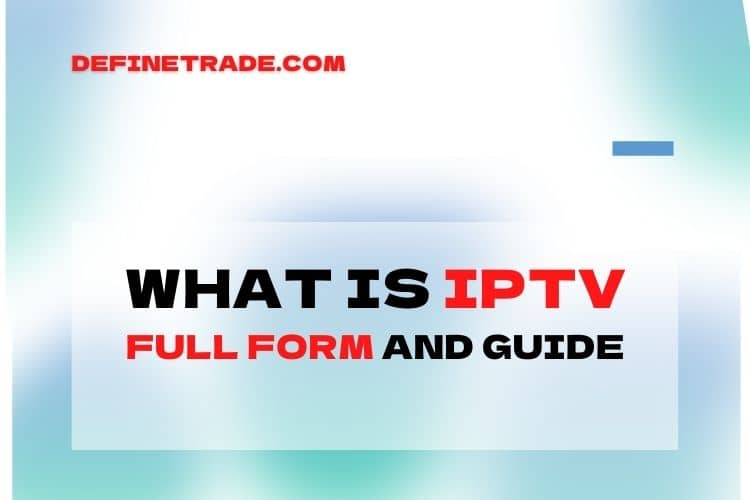What Is IPTV full form Guide 2022

Internet Protocol Television or IPTV is a different method of streaming television programming that is not broadcast via satellite or cable television by using the internet protocol. Some popular applications that make use of IPTV that you may have encountered comprise Netflix or Video on Demand, which is based on the growth of the smartphones’ customer base.
Types Of IPTV:
- Live Television This format is based on streams, broadcasting content as it occurs. It’s like watching television on your mobile device, but it is impossible to stop or skip episodes that aren’t interesting.
- Video On Demand Videos and audios are organized into categories similar to play-lists or categories such as music, sports news, or even videos.

Why Opt For IPTV?
Internet Protocol Television is like an uncontrollable fire that is slowly becoming other formats of broadcasting obsolete.The most important reasons for the increasing number of people using IPTV are the following:
- The widespread acceptance of broadband
- 5G has flipped the game. Internet speed is becoming faster and more stable every day.
- With the constant competition between phone service providers as well as cable providers You can count on a solid voice, video, and data bundle for a reasonable price.
Benefits Of Using IPTV:
There are a variety of reasons you should consider using IP TV. Traditional cable TV feeds play media content through the cable network throughout the day, while IPTV content is stored in the network of hosts until the user asks for it. This means that there’s more bandwidth available and users can stream videos at any time. This is also a sign that it’s important to maintain a robust host network.
- IPTV can be integrated in conjunction with any IP -based service, such as VoIP and high-speed internet.
- Videos that are recorded live or pre-recorded as well as audio files can be played on IPTV.
- IPTV utilizes your computer’s network and there’s no requirement for cables.
- With the help of the format of the video-on-demand users have an array of more shows to select on the network that hosts them.
- Content is always available on the host network, and the client chooses only what they require to see.
- IPTV has a bidirectional communication system in which the customer has to communicate via the services provider. In the case of a client, for instance, they choose a movie from the catalogue, and it is then delivered. This is also referred to as renting a movie.
- One of the most interesting features of IPTV includes its Electronic Program Guide (EPG) as well as its Personal Video Recorder (PVR) which is adaptable to each customer’s needs. It comes with interactive features such as pausing, rewinding, forward, and various other program recording capabilities when watching TV shows.
- IPTV can be used with any kind of display. These devices include LCD projection screens, displays as well as smartphones, computers, and televisions, without needing to sacrifice the quality of the video. In essence, you’re not restricted to cables and can stream your preferred shows on any device with access to the Internet.
- Internet Protocol Television is feature-rich and is a budget-friendly choice for entertainment on the go.
- Your security is the top priority when you use IPTV. Because content is streamed on the internet, you can have the option of choosing what to see. In addition, with security measures such as firewalls, you can be confident the content you watch is secure when you’re enjoying it.
- Flexible and scalable, Enterprise IPTV lets you connect to other TV and video sources from any location with internet connectivity without quality loss making it a simple but cost-effective extension system.
- Internet Protocol TV emphasizes the user experience. It’s a smooth connection, removing the tangle of wires so that the primary concern is broadcasting content. At the end of the day, the host network can enhance the quality of its digital signage, content, and display quality to provide the best experience for the user.
